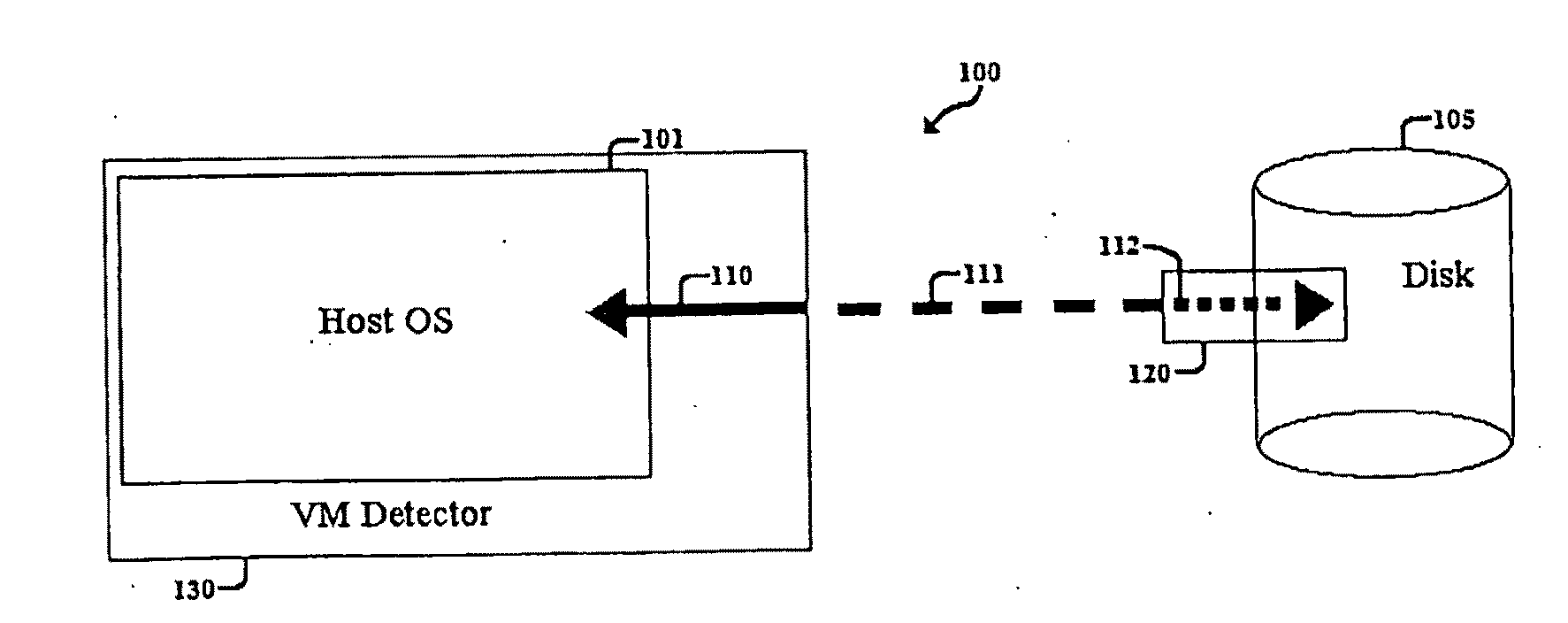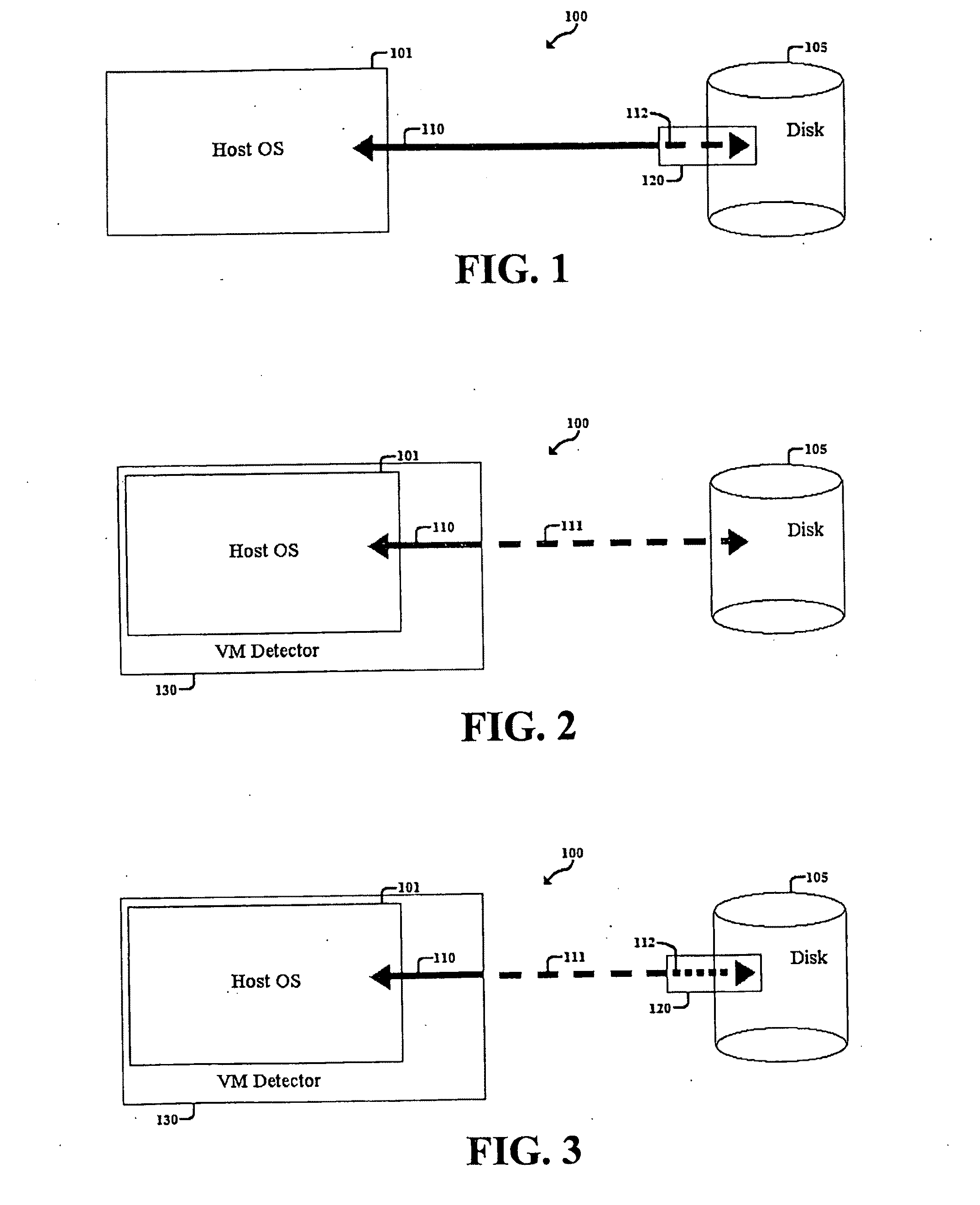Method, System, and Computer Program Product for Malware Detection, Analysis, and Response
a malware and analysis technology, applied in the field of malware detection, can solve the problems of not teaching any method, system, or program, failing to suggest that one analyze these reads and writes at the disk level, and devices, however, do not detect viruses using behavioral rules using the disk processor, so as to improve the accuracy of virus detection, protect users from malware, and reduce the amount of resources required
- Summary
- Abstract
- Description
- Claims
- Application Information
AI Technical Summary
Benefits of technology
Problems solved by technology
Method used
Image
Examples
example no.1
Example No. 1
[0061]An aspect of some of some of the embodiments of the present invention methods reduce the overhead of AV string scanning by distributing the work between the host and disk processors. Although this aspect of the invention concentrates on improving the scanning of anti-virus engines, this aspect has equal applicability in firewalls and SPAM email filters. Any type of application that must match some data according to some signature could be improved by using the disk to perform some work on its behalf. For firewalls, many rules are used to compare against network traffic to know what traffic should be blocked or allowed to pass through. Email filters must also match SPAM signatures to email traffic in order to attempt to accurately identify SPAM.
[0062]By reducing the scanning overhead the present invention methods and systems either improve overall system performance, or more likely, use the extra compute time to allow the host virus scanner to perform more sophisti...
example no.2
Example No. 2
[0086]An advantage of a dynamic disk-level approach in some of the various embodiments of the present malware detection system and related method is stopping viruses like W32.Funlove or others that can spread via network shares. Some techniques in stopping viruses like Funlove or others include using firewall rules [See supra Szo05, of which is hereby incorporated by reference herein in its entirety.], but an aspect of an embodiment may stop this at the disk without relying on network defense measures. If successful, recognizing a virus and its variants with disk-level signatures will be a big performance and reliability gain. Viruses like W32.Junkcomp or W95.Drill or others that are polymorphic and use anti-emulation techniques may be reliably detected using disk-level signatures. Other types of malware detection may also benefit from these techniques like macro virus detection [Sza02, See Gabor Szappanos. Are There any Polymorphic Macro Viruses at all? ( . . . And wha...
example 3
[0092]Four areas of contribution for disk-level behavioral detection addressed may include: developing methods for (1) manual generation of disk-level signatures, (2) automatically deriving disk-level signatures, (3) expressing disk-level signatures, and (4) checking disk-level signatures. In this section, our construction of these signatures is motivated by using W32.Tuareg as an example virus [See Dri00, Mental Driller. Tuareg Virus. November 2000, of which is hereby incorporated by reference herein in its entirety.]. W32.Tuareg is a polymorphic virus that uses garbage instructions and employs anti-emulation tricks. Tuareg's polymorphic engine has been used in other viruses (such as W95.Drill). A disk-level behavioral signature to Tuareg was developed such that it can efficiently detect Tuareg as well as many possible variants. The signature was developed starting with a disk-level signature using only reads and writes and progressively build better signatures using more semantic ...
PUM
 Login to View More
Login to View More Abstract
Description
Claims
Application Information
 Login to View More
Login to View More - R&D
- Intellectual Property
- Life Sciences
- Materials
- Tech Scout
- Unparalleled Data Quality
- Higher Quality Content
- 60% Fewer Hallucinations
Browse by: Latest US Patents, China's latest patents, Technical Efficacy Thesaurus, Application Domain, Technology Topic, Popular Technical Reports.
© 2025 PatSnap. All rights reserved.Legal|Privacy policy|Modern Slavery Act Transparency Statement|Sitemap|About US| Contact US: help@patsnap.com



